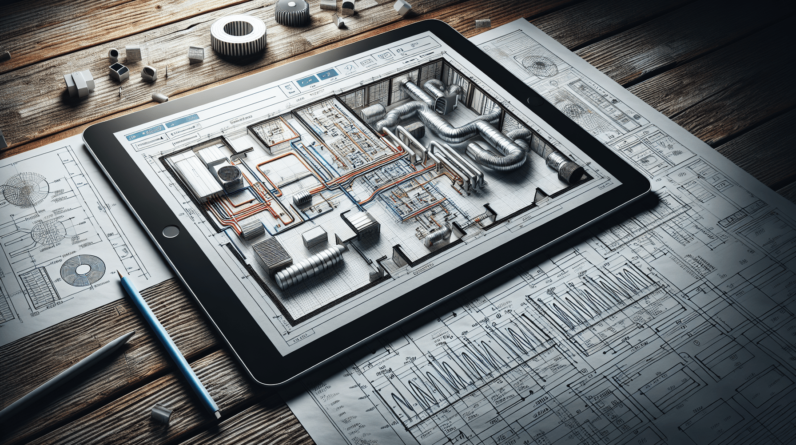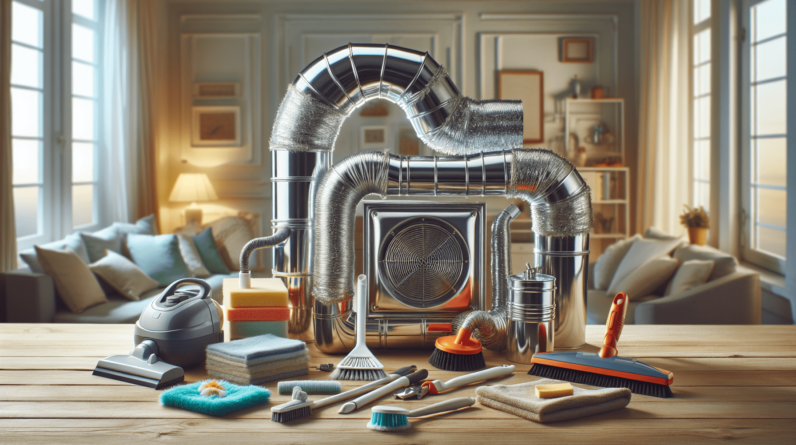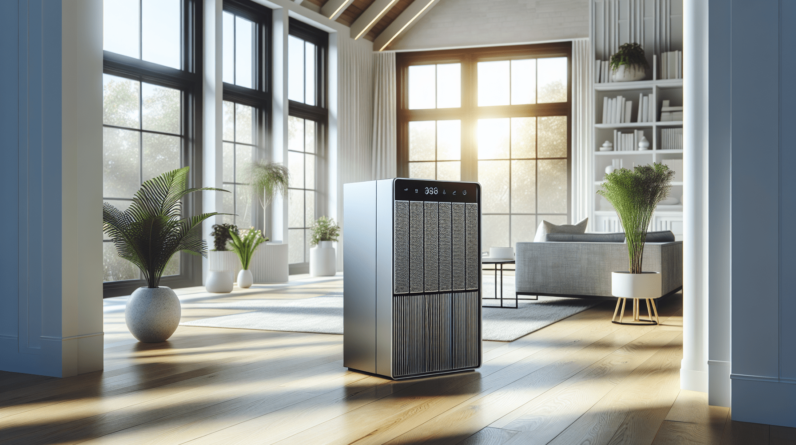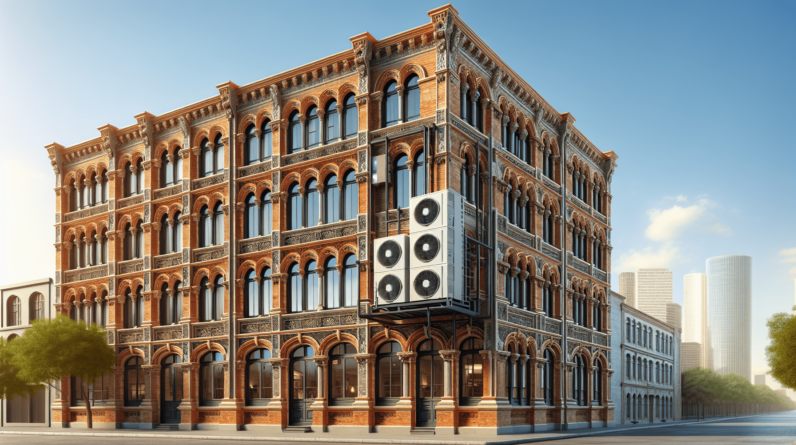

Have you ever found yourself puzzled by the intricacies of your HVAC system? Understanding how heating, ventilation, and air conditioning work is crucial for maintaining a comfortable and energy-efficient environment in your home. Let’s take a comprehensive look at how to read HVAC systems, along with some essential tips and details to keep you informed.
Understanding HVAC Basics
To wrap your head around reading HVAC systems, it’s important to start with the fundamentals. HVAC stands for Heating, Ventilation, and Air Conditioning, and it refers to the technology that maintains indoor climate control.
What is HVAC?
HVAC systems are designed to manage temperature, humidity, and air quality in your home or workplace. They keep you cozy in winter, cool in summer, and ensure there’s always fresh air circulating.
Components of HVAC Systems
Your HVAC system consists of several essential components, each playing a critical role. Here’s a brief overview of the main elements:
| Component | Function |
|---|---|
| Furnace | Heats the air and distributes it throughout the space. |
| Air Conditioner | Cools and dehumidifies the air for comfort. |
| Heat Pump | Provides both heating and cooling by transferring heat. |
| Ductwork | Channels heated or cooled air to and from rooms. |
| Thermostat | Regulates the temperature and can be programmable. |
| Ventilation Fans | These help circulate air and bring in fresh outdoor air. |
| Filters | Capture dust, allergens, and other particles to improve air quality. |
Knowing the components can help you understand how to read and interpret the system’s performance.
Reading HVAC Specifications
When it comes to evaluating and reading the specifics of an HVAC system, you’ll encounter several key metrics that help define its capacity and efficiency.
SEER Rating
The Seasonal Energy Efficiency Ratio (SEER) measures the efficiency of air conditioners and heat pumps. The higher the SEER, the more energy-efficient the unit.
AFUE Rating
Annual Fuel Utilization Efficiency (AFUE) gauges the efficiency of furnaces and boilers. An AFUE rating closer to 100% means more efficient fuel usage, which translates to lower energy bills.
BTU Measurement
BTU stands for British Thermal Unit, and it’s a measure of thermal energy. HVAC units are often rated in BTUs to indicate their heating or cooling capacity. Understanding BTUs can help you select the right unit for your space.
EER Rating
Energy Efficiency Ratio (EER) is another important metric that defines the efficiency of cooling systems. It’s similar to SEER but measures efficiency during the peak cooling season.
HSPF Rating
Heating Seasonal Performance Factor (HSPF) is used to measure the efficiency of heat pumps when heating. A higher HSPF indicates better performance and energy savings.

Recognizing HVAC Problems
Even the best HVAC systems can encounter problems. Learning to read the signs of issues can save you from costly repairs.
No Cool Air
If your air conditioner isn’t blowing cool air, it may be due to several factors such as a dirty filter, a low refrigerant level, or a malfunctioning compressor.
Uneven Heating or Cooling
Are some rooms warmer or cooler than others? This could result from blocked ducts, improperly sized units, or poor insulation.
Strange Noises
Unusual sounds like banging, hissing, or clattering can indicate loose parts or mechanical issues. Don’t ignore these noises; they could lead to bigger problems.
Increased Energy Bills
If you notice a spike in your energy bills that isn’t justified by changes in usage, it might point to inefficiencies in your HVAC system.
Poor Air Quality
Signs such as unexplained allergies or respiratory issues could indicate that your HVAC system isn’t filtering air effectively.
Maintenance of HVAC Systems
Regular maintenance is crucial for ensuring your HVAC operates efficiently. Here’s what you can do:

Change Filters Regularly
Filters should typically be changed every one to three months, depending on use. Dirty filters can reduce airflow and efficiency, leading to increased bills and poor air quality.
Schedule Professional Inspections
Having your system inspected by professionals at least once a year can help catch issues before they escalate. Technicians can clean, adjust, and tune your system for optimal performance.
Clean Ducts
Dirty ductwork can harbor dust, allergens, and even mold, affecting air quality. It’s advisable to have your ducts cleaned every three to five years, depending on your home’s environment and usage.
Check Insulation
Proper insulation helps maintain the temperature inside your home, reducing the burden on your HVAC system. Ensure that your attic and walls are well insulated.
Seal Leaks
Inspect for leaks around windows and doors. Sealing these leaks can significantly improve your HVAC system’s efficiency by restricting airflow.

Understanding Thermostats
Thermostats play a vital role in regulating your HVAC system. Knowing how to read and set them can lead to energy savings and comfort.
Types of Thermostats
You may encounter several common thermostat types:
| Type | Description |
|---|---|
| Manual Thermostat | Requires manual adjustments for temperature settings. |
| Programmable Thermostat | Allows you to set schedules for heating and cooling, optimizing efficiency. |
| Smart Thermostat | Connects to Wi-Fi, learns your habits, and can be controlled remotely. |
Smart thermostats can save you a significant amount on energy bills while providing maximum comfort.
Setting Your Thermostat
During winter, it’s commonly recommended to set your thermostat to around 68°F while you’re home and lower it when you leave. In summer, keep it at about 78°F when you’re at home to balance comfort and efficiency.
Indoor Air Quality (IAQ)
Maintaining good indoor air quality is essential, not just for comfort but for health as well.
Importance of Ventilation
Proper ventilation is key in controlling humidity levels and ensuring fresh air circulation. You may want to invest in an air exchanger or energy recovery ventilator to enhance IAQ.
Humidity Control
Humidity levels should ideally be between 30% and 50%. Using humidifiers or dehumidifiers can help maintain comfortable humidity levels.
Use of Air Purifiers
Air purifiers can effectively remove allergens, dust, and pollutants, significantly improving your home’s air quality.
Regular Maintenance for IAQ
Changing filters regularly, cleaning ducts, and ensuring proper ventilation are vital steps in maintaining a healthy indoor environment.
Rating Your HVAC System
To choose or evaluate an HVAC system, you will want to consider factors like your space needs, the local climate, and energy cost.
Square Footage
The size of the area you want to heat or cool will determine the capacity of the unit you need. This is often measured in BTUs.
Locational Considerations
Your climate will affect the type of HVAC system you need. For example, homes in humid, hot climates may benefit from more robust air conditioning systems.
Energy Efficiency
Invest in high-efficiency systems which might initially cost more but will save you money in energy bills over time.
Troubleshooting Your HVAC System
Being able to troubleshoot basic HVAC issues can save you time and money. Here are some common troubleshooting tips.
Thermostat Issues
If your thermostat isn’t functioning properly, it could be set to the wrong mode or may require new batteries. Ensure it’s set to the appropriate setting and check the batteries if applicable.
Airflow Problems
If air isn’t circulating well, examine your vents for blockages. Furniture or trash can obstruct airflow.
System Doesn’t Start
If your HVAC system fails to turn on, check your circuit breaker. If the breaker isn’t tripped, ensure the system is receiving power and that the thermostat is correctly set.
Strange Odors
If your HVAC system emits smells, it might indicate mold or a sign that something is burning. Shut down your system and consult a professional if odors persist.
Upgrading Your HVAC System
As technology advances, upgrading your HVAC system becomes an attractive option. Here’s what you should consider.
When to Upgrade
If your system is over ten years old, frequently requires repairs, or your energy bills have skyrocketed, it may be time for an upgrade.
Benefits of Modern Systems
Newer HVAC systems are generally more energy-efficient and come with smart technologies that enhance your comfort and control.
Cost of Upgrades
Consider the expenses associated with purchasing, installing, and maintaining a new system. Research potential savings from energy efficiency to weigh against upfront costs.
Conclusion
Becoming familiar with your HVAC system is an ongoing journey filled with learning. As you read HVAC specifications and spot common problems, you position yourself to keep your indoor environment comfortable, healthy, and energy-efficient.
By putting the tips and insights provided here into practice, you’ll develop a deeper understanding of your system. Stay proactive with maintenance, and don’t hesitate to reach out to professionals whenever necessary; this balanced approach leads to long-term satisfaction with your HVAC system.






